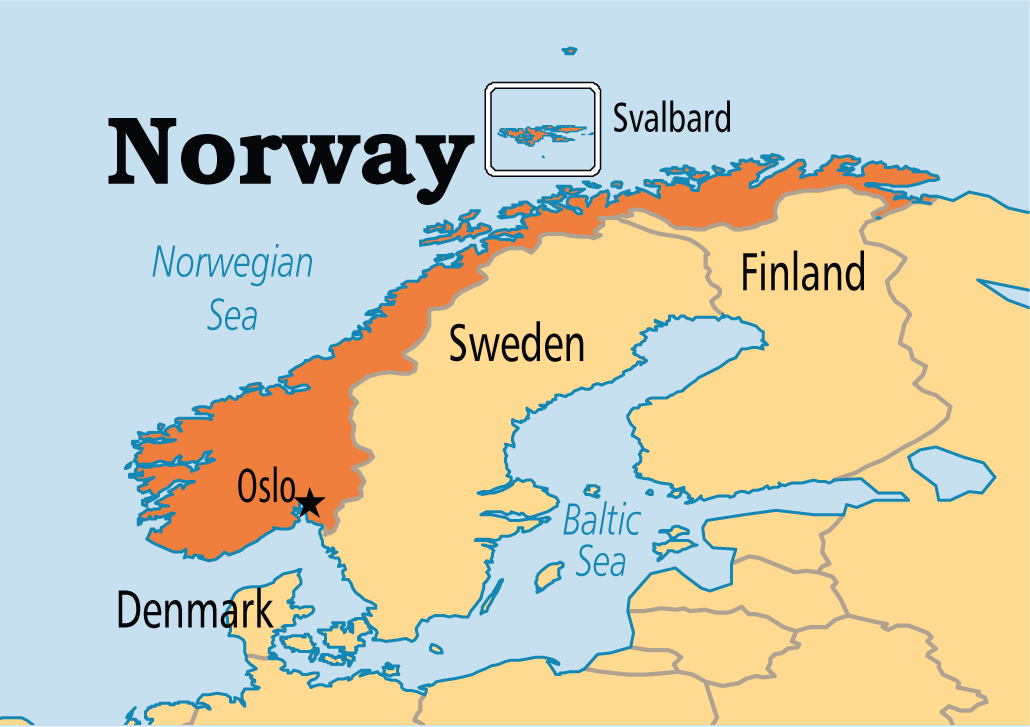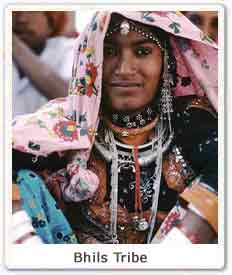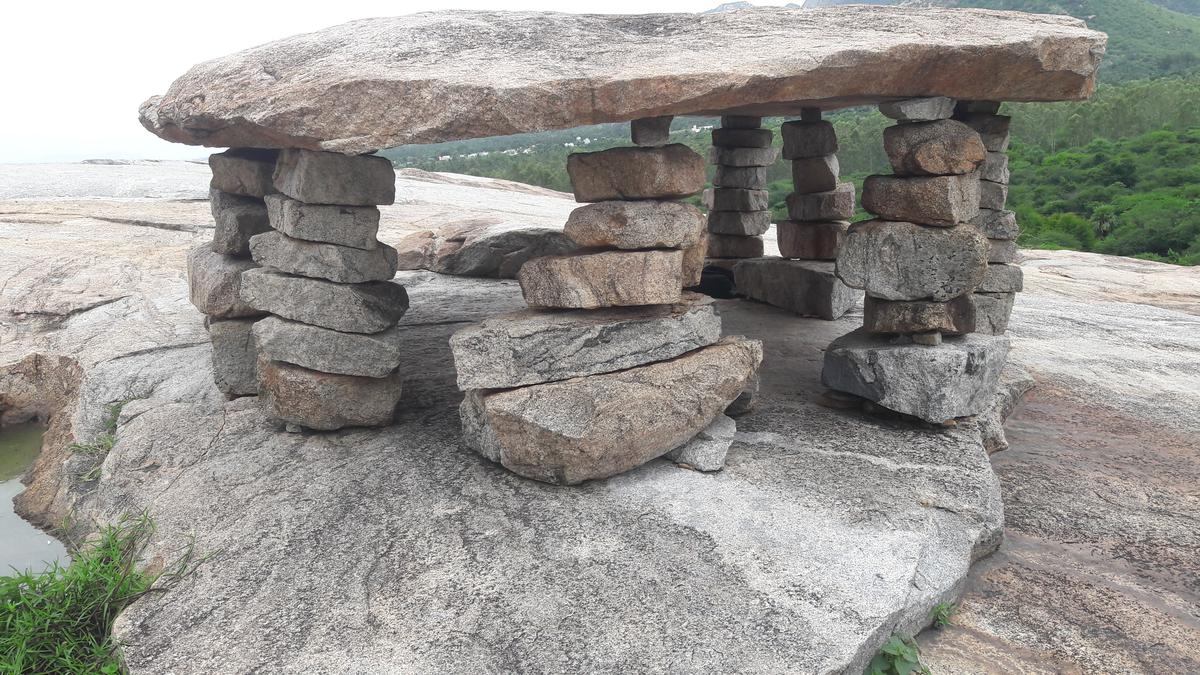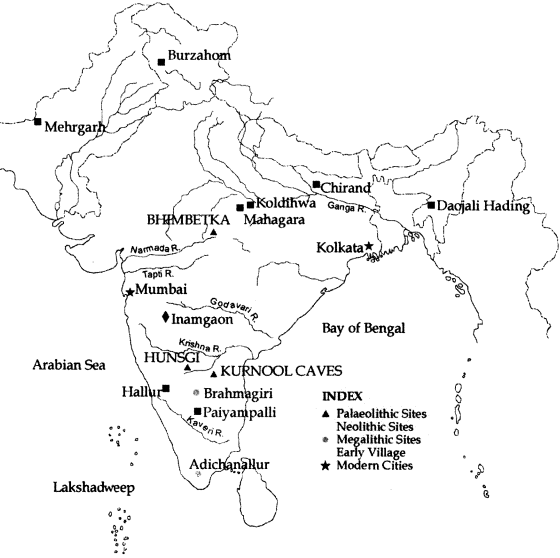Infographics
Indian Polity
Ninth Schedule
For Prelims: Reservation, Supreme Court, Constitution (First Amendment) Act, 1951.
For Mains: Ninth Schedule of the Constitution.
Why in News?
The Jharkhand Assembly has cleared two Bills, but these changes will come into force only after the Centre carries out amendments to include these in the Ninth Schedule of the Constitution.
What are these Bills?
- Jharkhand Reservation of Vacancies in Posts and Services (Amendment) Bill, 2022:
- It raises reservations to 77%.
- Within the reserved category, the Scheduled Castes will get a quota of 12 %, up from 10%; 27% for OBCs, up from 14%; 28% for Scheduled Tribes, a 2 % increase; and 10% for Economically Weaker Sections (EWS).
- Jharkhand Local Persons Bill, 2022:
- It aims at granting local residents “certain rights, benefits, and preferential treatment” over their land; in their stake in local development of rivers, lakes, fisheries; in local traditional and cultural and commercial enterprises; in rights over agricultural indebtedness or availing agricultural loans; in maintenance and protection of land records; for their social security; in employment in private and public sector; and, for trade and commerce in the state.
Why is there need to Include in Ninth Schedule
- The 77 % reservation breaches the 50 % ceiling set by the Supreme Court in the 1992 Indra Sawhney v Union of India verdict.
- However, placing a legislation in the Ninth Schedule shields it from judicial scrutiny.
- Previously, the Tamil Nadu Backward Classes, Scheduled Castes and Scheduled Tribes (Reservation of Seats in Educational Institutions and of Appointments or Posts in the Services under the State) Act, 1993, reserved 69 % of the seats in colleges and jobs in the state government.
What is the Ninth Schedule?
- The Schedule contains a list of central and state laws which cannot be challenged in courts and was added by the Constitution (First Amendment) Act, 1951.
- The first Amendment added 13 laws to the Schedule. Subsequent amendments in various years have taken the number of protected laws to 284 currently.
- It was created by the new Article 31B, which along with Article 31A was brought in by the government to protect laws related to agrarian reform and for abolishing the Zamindari system.
- While Article 31A extends protection to ‘classes’ of laws, Article 31B shields specific laws or enactments.
- While most of the laws protected under the Schedule concern agriculture/land issues, the list includes other subjects.
- Article 31B also has a retrospective operation which means that if laws are inserted in the Ninth Schedule after they are declared unconstitutional, they are considered to have been in the Schedule since their commencement, and thus valid.
- Although Article 31B excludes judicial review, the apex court has said in the past that even laws under the Ninth Schedule would be open to scrutiny if they violated Fundamental Rights or the basic structure of the Constitution.
Are Laws in the Ninth Schedule completely Exempt from Judicial Scrutiny?
- Keshavananda Bharati v. State of Kerala (1973): The court upheld the judgement in Golaknath and introduced a new concept of “Basic structure of the Indian Constitution” and stated that, “all provisions of the constitution can be amended but those amendments which will abrogate or take away the essence or basic structure of constitution which included Fundamental Rights are fit to be struck down by the court”.
- Waman Rao v. Union of India (1981): In this important judgement, the SC ruled that, “those amendments which were made in the constitution before 24th April 1973 (date on which judgement in Keshavananda Bharati was delivered) are valid and constitutional but those which were made after the stated date are open to being challenged on the ground of constitutionality.
- I R Coelho v. State of Tamil Nadu (2007): It was held that every law must be tested under Article 14, 19 and 21 if it came into force after 24th April 1973.
- In addition, the court upheld its previous rulings and declared that any act can be challenged and is open to scrutiny by the judiciary if it is not in consonance with the basic structure of the constitution.
- In addition, it was held that if the constitutional validity of any law under the ninth schedule has been upheld before, in future it cannot be challenged again.
Way Forward
- Although reservation is necessary, it should also be open to judicial scrutiny in order to ensure any abrupt or irrational policy initiative by the Executive or the Legislature.
- Any loophole or shortcomings in reservation policy must be addressed by involving various stakeholders. The need of the hour is not to go to extremes of either scrapping or shielding reservation policy, rather a rational framework on this contentious policy must be developed.
UPSC Civil Services Examination Previous Year Question (PYQ)
Prelims
Q1. Consider the following statements: (2018)
- The Parliament of India can place a particular law in the Ninth Schedule of the Constitution of India.
- The validity of a law placed in the Ninth Schedule cannot be examined by any court and no judgement can be made on it.
Which of the statements given above is/are correct?
(a) 1 only
(b) 2 only
(c) Both 1 and 2
(d) Neither 1 nor 2
Ans: (a)
Q2. The Ninth Schedule was introduced in the Constitution of India during the prime ministership of (2019)
(a) Jawaharlal Nehru
(b) Lal Bahadur Shastri
(c) Indira Gandhi
(d) Morarji Desai
Ans: (a)
Mains
Q. What was held in the Coelho case? In this context, can you say that judicial review is of key importance amongst the basic features of the Constitution? (2016)


International Relations
India Norway Relations
For Prelims: Geography of Norway, India Norway Relations
For Mains: History of India Norway Relations, Recent Developments in India Norway Relations
Why in News?
Recently, Norway’s Ambassador to India has reported that the bilateral trade between India and Norway has doubled to $2 billion in the last two years.
What are the Upcoming Areas of Cooperation in India Norway Relations?
- Norway would invest $1 billion from its climate investment fund in five years worldwide, how much of the funds would be invested in India would depend on the projects.
- Norway is working with the National Institute of Wind Energy for Wind Energy related projects.
- However, the problem in India is that only Tamil Nadu and Gujarat had stable wind to make it viable.
- Norway is working closely with India to find a way to get enough countries to ratify the Hong Kong Convention. It will be a binding international legal instrument.
How has India’s Relations with Norway been?
- History:
- India and Norway have been enjoying a cordial and friendly relationship since the establishment of relations in 1947.
- Norway’s first Consulates in India opened in Kolkata and Mumbai in 1845 and 1857, respectively.
- In 1952, the “India fund” was established” with the aim to provide development assistance with a focus on fisheries.
- The same year, Norway opened its Embassy in New Delhi.
- Norway has supported India’s membership to export control regimes the Missile Technology Control Regime (MTCR), the Wassenaar Arrangement (WA) and the Australia Group (AG).
- India signed a Double Taxation Avoidance Agreement (DTAA) with Norway in 1986 which was revised in February 2011.
- Developments:
- Consulate General of Norway:
- The Consulate General in Mumbai re-opened its doors in 2015.
- It had been closed since the 1970s.
- It was joined by Innovation Norway, the Norwegian government’s official trade representative, which now has offices both in Mumbai and New Delhi.
- The Consulate General in Mumbai re-opened its doors in 2015.
- India Strategy:
- In December 2018, the Norwegian government launched a new ‘India Strategy’. The strategy sets clear priorities for the Norwegian government until 2030 and gives renewed impetus to develop the bilateral cooperation.
- The India Strategy outlines five thematic priorities:
- Democracy and a rules-based world order
- The oceans
- Energy
- Climate and Environment
- Research, higher education and global health
- The India Strategy outlines five thematic priorities:
- To achieve these objectives, Norway focuses on political contact and cooperation between the authorities, business cooperation, and research cooperation.
- In December 2018, the Norwegian government launched a new ‘India Strategy’. The strategy sets clear priorities for the Norwegian government until 2030 and gives renewed impetus to develop the bilateral cooperation.
- Task Force on Blue Economy:
- In 2020, the India-Norway Task Force on Blue Economy for Sustainable Development was inaugrated jointly by both the countries. This task force was launched during Norwegian Prime Minister's visit to India earlier in 2019.
- The purpose of the task force is to develop and follow up joint initiatives between the two countries.
- It also intends to mobilise relevant stakeholders from both Norway and India at the highest level, and ensure continued commitment and progress across ministries and agencies.
- Norway’s PM Visit to India:
- In 2019, the Prime Minister of Norway visited India and a number of MOUs were signed.
- The Prime Minister also delivered the inaugural address at the Raisina Dialogue and inaugurated the India-Norway Business Summit.
- Economic Relations:
- As of 2019, more than 100 Norwegian companies have established themselves in India.
- Another 50 are represented by agents.
- The Norwegian Pension Fund Global is likely one of India’s largest single foreign investors. In 2019, its investments amounted to USD 9.5 billion.
- Exports from Norway to India include Nonferrous metals, gas natural manufactured, plastic in primary form, crude minerals, chemical material and products.
- The main items of export from India to Norway include articles of apparels and accessories, textile yarns, manufactures of metals, rice and miscellaneous manufactured articles.
- As of 2019, more than 100 Norwegian companies have established themselves in India.
- Cooperation in Various Fields:
- Norway has the fifth largest commercial ship fleet in the world, and ship recycling was crucial to keep up a modern fleet, both for environmental as also for competitive reasons. Norway is cooperating closely with India in “Ship recycling and shipbuilding” activities.
- Academic collaborations exist between the Indian Institute of Technology-Madras and the Institute of Wind Energy in Chennai with institutions in Norway.
- The Norwegian company, Piql, was involved in creating a digital archive for Indian monuments such as the Taj Mahal. The company was also involved in digitalising historical monuments, Dholavira in Gujarat and the Bhimbhetka Caves in Madhya Pradesh.
- Consulate General of Norway:

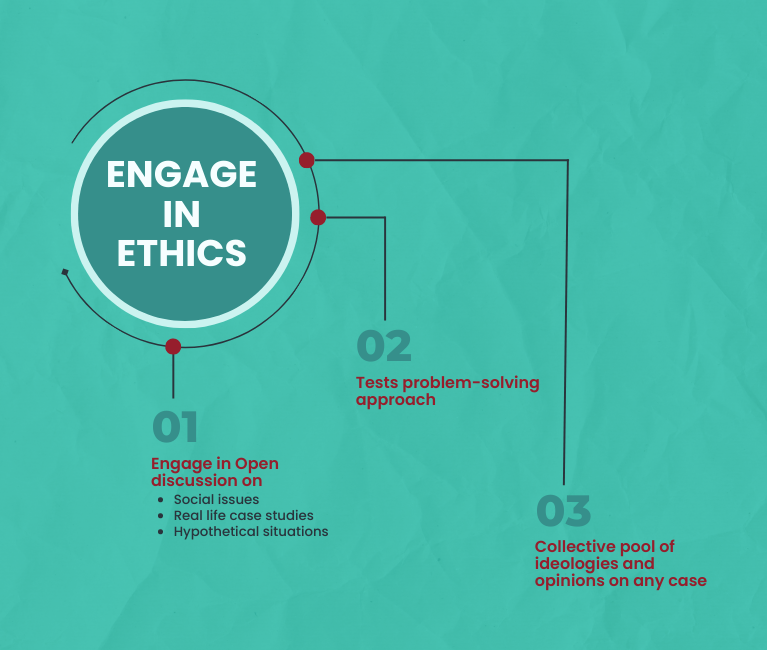
Internal Security
Projects to Track Small Fishing Vessels
For Prelims: Exercise Sea Vigil, India’s Coastal Management Projects
For Mains: Coastal Security, India’s Projects to secure Coastal Line, Exercise Sea Vigil
Why in News?
Recently, it has been reported that projects launched to track small fishing vessels along India’s coast are making progress.
- The third edition of the ‘pan-India’ coastal defence Exercise Sea Vigil-22 is also scheduled to be held on 15th-16th November to test coastal security.
What are Different Projects to Track Small Fishing Vessels?
- Automatic Identification System:
- An Automatic Identification System (AIS) was made compulsory for all vessels above 20 metres after the 2008 terrorist attacks in Mumbai.
- The decision was taken by the National Committee on Strengthening Maritime and Coastal Security, set up to look into issues related to coastal security.
- However, for vessels under 20 metres, the process has been delayed for several reasons.
- Vehicle Management System:
- The Vehicle Management System (VMS) has advanced features and enables two-way communication. The technology has been handed over to four companies for commercial production.
- Trials were conducted in association with the Indian Space Research Organisation on one of their communication satellites last year along the coasts of Gujarat and Tamil Nadu.
- ReALCraft:
- Verification and monitoring of a large number of fishing vessels in India has been greatly eased by the creation of the online ReALCraft (Registration and Licensing of Fishing Craft).
- Biometric Identity Cards:
- Issuance of biometric identity cards to the majority of fishermen and composite card readers to the maritime security agencies has been done to enable biometric verification of the identity of fishing vessel crews at sea.
- Indo-Pacific Maritime Domain Awareness (IPMDA):
- As part of overall efforts for Maritime Domain Awareness (MDA) on the high seas, the Quad grouping, at the Tokyo summit 2022 announced an ambitious Indo-Pacific Maritime Domain Awareness (IPMDA) initiative to track “dark shipping” and build a “faster, wider, and more accurate maritime picture of near-real-time activities in partners’ waters” integrating three critical regions in the Indo-Pacific - the Pacific Islands, Southeast Asia, and Indian Ocean Region (IOR).
What is Exercise Sea Vigil?
- About:
- The inaugural edition of the exercise was conducted in January 2019.
- It is billed as India's largest coastal defence drill.
- The exercise is a build up towards the major Theatre Level Readiness Operational Exercise (TROPEX), which the Indian Navy conducts every two years.
- 2022 Edition:
- Exercise Sea Vigil-22 will provide realistic assessment of India’s strengths and weaknesses and thus will help in further strengthening maritime and national security.
- The exercise will see activation of the coastal security apparatus across India and is being conducted by the Indian Navy in coordination with Coast Guard and other Ministries entrusted with the task of maritime activities.
- The exercise will be undertaken along the entire 7,516 km coastline and Exclusive Economic Zone of India and will involve all the Coastal States and Union territories along with other maritime stakeholders, including the fishing and coastal communities.
- Significance:
- Sea Vigil and TROPEX together will cover the entire spectrum of maritime security challenges, including transition from peace to conflict.
- It provides opportunity, at the apex level, to assess the country’s preparedness in the domain of maritime security and coastal defence.


Governance
Eklavya Model Residential Schools
For Prelims: Eklavya Model Residential School (EMRS), Scheduled Tribes (STs).
For Mains: Initiatives for Promoting the Welfare of Students from Deprived Sections of the Indian Society, Challenges and Solution.
Why in News?
The government is pushing to set up 740 Eklavya Model Residential Schools (EMRS) for Scheduled Tribe (ST) students.
What are EMRS?
- EMRS is a scheme for making model residential schools for STs across India.
- It started in the year 1997-98.
- Its nodal ministry is Ministry of Tribal Affairs.
- The aim of the scheme to build schools at par with the Jawahar Navodaya Vidyalayas and Kendriya Vidyalayas with focus on special state-of-the-art facilities for preserving local art and culture besides providing training in sports and skill development.
- The EMR School follows the CBSE curriculum.
- In 2018-19, revamping of the EMRS scheme was approved by the Cabinet.
- Since the new guidelines have been put into place, the Ministry of Tribal Affairs sanctioned 332 of the targeted 452 schools till 2021-22.
- As of November 2022, a total of 688 schools have been sanctioned, of which 392 are functional.
- Of the 688, 230 have completed construction and 234 are under construction, with 32 schools still stuck due to land acquisition issues.
What were the Old Guidelines?
- Although the Union government had sanctioned a certain number of preliminary EMRS, the States and Union Territories were responsible for seeking sanction of new schools as and when they needed it.
- The funds for these schools were to come from the grants under Article 275(1) and the guidelines mandated that unless States finished constructing the schools sanctioned by the Centre, they would not be entitled to funds for new ones.
- Apart from the infrastructural requirements of 20-acre plots for each EMRS, the guidelines did not have any criteria of where the EMRS could be set up, leaving it to the discretion of State governments.
What are the New Guidelines?
- The new guidelines in 2018-19 gave the Union government more power to sanction schools and manage them.
- A National Education Society for Tribal Students (NESTS) was set up and entrusted with the management of the State Education Society for Tribal Students (SESTS), which would run the EMRS on the ground.
- The new guidelines set a target of setting up an EMRS in every tribal sub-district and introduced a “population criteria” for setting them up.
- One EMRS will be set-up per sub-district that has at least a 20,000-odd Scheduled Tribe (ST) population, which must be 50% of the total population in that area.
- The minimum land requirement for setting up an EMRS was reduced from 20 acres to 15 acres.
What are the Challenges?
- Requirement of 15-acre Area:
- As per the Standing Committee Report, requirement of 15-acre area is making the identification and acquisition of land troublesome, especially in hilly areas, leftwing extremism-affected areas and the northeast.
- Population Criteria:
- The Standing Committee noted that the population criteria is depriving a scattered tribal population of the benefit of EMRS.
- Sometimes, when the population criteria are fulfilled, 15-acre plots are not available.
- Shortage of Teachers:
- Despite the setting up of the NESTS, there was a shortage of teachers.
- Though the new guidelines allowed NESTS to suggest measures for teacher recruitment, they never made them mandatory for the States to follow.
- This led to non-uniformity in the quality of teachers, not enough recruitment in reserved positions, and a large number of schools recruiting teachers contractually, in a bid to save on salary expenses.
- As of July 2022, all functional EMRS had a teaching strength of just under 4,000 against the 11,340 recommended by NESTS.
Way Forward
- Guidelines regarding area of land and population criteria should be relaxed so that the less dense tribal populations can also reap the benefit of EMRS scheme.
- More control of school management should be given to NESTS to overcome the shortage of teachers.
- Also, mandatory guidelines about teacher recruitment must be issued for the States.


Governance
Data Localisation
For Prelims: Data Protection, Personal Data, Privacy, Personal Data Protection Bill, Data Localisation, Other Related Laws
For Mains: Data Localisation: Advantages, Regarding Concerns, Provisions in India, Steps that can be taken
Why in News?
Recently, the United Nations Conference on Trade and Development (UNCTAD) highlighted the importance of Data Localisation for economies to protect data during cross-border transfers.
- The UNCTAD in its report found that businesses using the internet for global trade have a higher survival rate than those who do not.
What is Data Localisation?
- Data Localisation is storing critical as well as non-critical data within the territorial boundaries of the country.
- The most important aspect of data localisation is having control over our own data which makes the country more resistant to issues around privacy, information leaks, identity thefts, security etc.
- It has also helped the countries develop their own startups, evolve locally and also thrive in their own language.
What are the Advantages of Data Localisation?
- Protects Privacy and Sovereignty:
- Secures citizens' data and provides data privacy and data sovereignty from foreign surveillance.
- The main intent behind data localisation is to protect the personal and financial information of the country’s citizens and residents from foreign surveillance
- Monitoring of Laws & Accountability:
- Unfettered supervisory access to data will help Indian law enforcement ensure better monitoring.
- Data localisation will result in greater accountability from firms like Google, Facebook etc. about the end use of data.
- Ease of Investigation:
- Ensures national security by providing ease of investigation to Indian law enforcement agencies as they currently need to rely on Mutual Legal Assistance Treaties (MLATs) to obtain access to data.
- MLATs are agreements between governments that facilitate the exchange of information relevant to an investigation happening in at least one of those countries.
- India has signed a Mutual Legal Assistance Treaty (MLAT) with 45 countries.
- Ensures national security by providing ease of investigation to Indian law enforcement agencies as they currently need to rely on Mutual Legal Assistance Treaties (MLATs) to obtain access to data.
- Jurisdiction & Reduction in Conflicts:
- It will give local governments and regulators the jurisdiction to call for the data when required.
- Minimises conflict of jurisdiction due to cross-border data sharing and delay in justice delivery in case of data breach.
- Increase in Employment:
- Data center industries are expected to benefit due to localisation which will further create employment in India.
What are the Disadvantages of Data Localisation?
- Investments:
- Maintaining multiple local data centers may lead to significant investments in infrastructure and higher costs for global companies.
- Fractured Internet:
- Splinternet, where the domino effect of protectionist policy can lead to other countries following suit.
- Lack of Security:
- Even if the data is stored in the country, the encryption keys may still remain out of the reach of national agencies.
- Impact on Economic Growth:
- Forced data localisation can create inefficiencies for both businesses and consumers.
- It can also increase the cost and reduce the availability of data-dependent services.
What are the Data Localisation Norms?
- In India:
- Srikrishna Committee Report:
- At Least one copy of personal data will need to be stored on servers located within India.
- Transfers outside the country will need to be subject to safeguards.
- Critical personal data will only be stored and processed in India.
- Personal Data Protection Bill, 2019:
- The Personal Data Protection Bill, 2019 was introduced in Lok Sabha by the Minister of Electronics and Information Technology, on December 11, 2019.
- It intended to protect individual rights by regulating the collection, movement, and processing of data that is personal, or which can identify the individual.
- This bill was though withdrawn from Parliament in 2022 as government considers a “comprehensive legal framework” to regulate the online space to boost innovation in the country through a new bill.
- Draft National E-Commerce Policy Framework:
- Recommended data localisation and suggested a two-year sunset period for the industry to adjust before localization rules became mandatory.
- Proposes incentives to encourage data localization and grant infrastructure status to data centers.
- Boycott of Osaka Track:
- At the G20 summit 2019, India boycotted the Osaka Track on the digital economy. The Osaka Track pushed hard for the creation of laws that would allow data flows between countries and the removal of data localisation.
- Banning of Chinese Mobile Apps:
- In 2020, the Indian government announced to ban 59 widely used apps (such as Tik Tok, ShareIt, Cam scanner etc), most linked to Chinese companies.
- The Ministry of Electronics and Information Technology (MeitY), invoked Information Technology (IT) Act, 2000 to cite the concerns regarding both data security and national sovereignty associated with these apps.
- Srikrishna Committee Report:
- Global:
- Canada and Australia protect their health data very carefully.
- China mandates strict data localisation in servers within its borders.
- The European Union (EU) had enacted the General Data Protection Regulation (GDPR) which establishes the right to privacy as one of the fundamental rights.
- The United States has no single data protection law at the Federal level. It does, however, have individual laws such as HIPAA (Health Insurance Portability and Accountability Act of 1996) for health care, another for payments, and the like.
- Many bilateral and multilateral agreements exist as well. These include countries committing to identical data protection norms and commitments towards cross-border data transfer and data localisation, examples being, the Clarifying Lawful Overseas Use of Data (CLOUD) Act (2018), Comprehensive and Progressive Agreement for Trans-Pacific Partnership (2018), Digital Economy Agreement (DEA), (2020), among others.
Way Forward
- There is a need to have an integrated long-term strategy for policy creation for data localisation.
- Adequate attention needs to be given to the interests of India’s Information Technology enabled Services (ITeS) and Business Process Outsourcing (BPO) industries, which are thriving on cross-border data flow.
- Access to data by Indian law agencies, in case of a breach or threat, cannot be dependent on the whims and fancies, nor on lengthy legal processes of another nation that hosts data generated in India.
- According to the sources, lack of law enforcement is causing issues in the recent Free Trade Agreement (FTA) between India and UK.
- All the players involved, including banks, telecom companies, financial service providers, technology platforms, social media platforms, e-commerce companies and the government, need to play a responsible role in ensuring innocent citizens do not undergo the trauma of suffering losses.


Important Facts For Prelims
Indian Biological Data Centre
Why in News?
Recently, government has set up ‘Indian Biological Data Bank’ at the Regional Centre for Biotechnology (RCB), Faridabad.
- Indian Biological Data Bank is better known as ‘Indian Biological Data Centre (IBDC)’.
What is IBDC?
- About:
- IBDC is the first national repository for life science data in India, where the data will not only be submitted from across India but can be accessed by researchers from across India
- It is mandated to archive all life science data in IBDC generated from publicly funded research in India.
- The data center is supported by the Department of Biotechnology (DBT).
- It is being established at the RCB in collaboration with the National Informatics Centre (NIC), Bhubaneshwar.
- It costed around 85 crore rupees to be set up.
- Key Features:
- The digitised data will be stored on a four-petabyte supercomputer called ‘Brahm’.
- A petabyte equals 10,00,000 gigabytes (gb).
- Different sections of IBDC would typically deal with particular type(s) of life science data.
- Each IBDC section would have dedicated data submission and access schema.
- IBDC has a backup data ‘Disaster Recovery’ site at NIC.
- Further, IBDC shall also develop highly curated data sets in order to facilitate knowledge discovery in various domains of life sciences.
- It would also provide infrastructure and expertise for biological data analysis.
- It currently accepts nucleotide sequences — the digitised genetic makeup of humans, plants, animals, and microbes.
- There are now 200 billion base pair data in the bio-bank, including 200 human genomes sequenced under the ‘1,000 Genome Project’, which is an international effort to map the genetic variations in people.
- The project will also focus on populations that are predisposed to certain diseases.
- It will also help researchers in studying zoonotic diseases.
- There are now 200 billion base pair data in the bio-bank, including 200 human genomes sequenced under the ‘1,000 Genome Project’, which is an international effort to map the genetic variations in people.
- Although the database currently only accepts such genomic sequences, it is likely to expand later to storage of protein sequences and imaging data such as copies of Ultrasound and Magnetic Resonance Imaging (MRI).
- The digitised data will be stored on a four-petabyte supercomputer called ‘Brahm’.
- Objectives:
- Provide IT platform for perpetually archiving biological data in the country.
- Development of standard operating Procedures (SOPs) for storing and sharing the data as per FAIR (Findable, Accessible, Interoperable and Reusable) Principle.
- Perform quality control, curation/annotation of data, data backup and management of data life cycle.
- Development of web-based tools/Application Programming Interface (API) for data sharing/retrieval.
- Organization of training programs on ‘Big’ data analysis and benefits of data sharing.
- Data Access:
- IBDC would have majorly two data access types:
- Open access/time-release access: Data submitted at IBDC would be freely accessible across the globe as per international open-access standards. The submitter, however, may choose to restrict the data access for a defined period of time.
- Restricted access: The data would not be made accessible freely. It can only be accessed through prior permission through IBDC from the original data submitter.
- IBDC would have majorly two data access types:
- Significance:
- It will reduce the dependency of Indian researchers on American and European data banks.
- It will not only provide a platform to researchers to securely store their data within the country, it will also provide access to a large database of indigenous sequences for analyses.
- Such databases have traditionally played a key role in determining the genetic basis of various diseases and finding targets for vaccines and therapeutics.


Important Facts For Prelims
Mangarh Massacre
Why in News?
A horrifying tragedy occurred in Mangarh (Banswada, Rajasthan) killing more than 1,500 Bhil tribals on 17th November, 1913.
- The Mangrah hillock, situated at the Gujarat-Rajasthan border, is also known as the Adivasi Jallianwala.
What led to the Mangarh Massacre?
- The Bhils, a tribal community faced great troubles at the hands of the rulers of the princely states and the British.
- By the end of the 20th century, the Bhils living in Rajasthan and Gujarat became bonded labour.
- The great famine of 1899-1900 across the Deccan and Bombay Presidency, which killed over six lakh people, only made the situation worst for the Bhils.
- Mobilised and trained by social activist Guru Govindgiri, also known as Govind Guru, the Bhils placed a charter of 33 demands before the British by 1910 primarily relating to forced labour, high tax imposed on Bhils and harassment of the guru’s followers by the British and rulers of princely states.
- The Bhils rejected the British’s attempt to placate them and refused to leave Mangarh Hill, vowing to declare freedom from British rule.
- The British then asked the Bhils to leave Mangarh Hill before 15 November 1913.
- But that didn’t happen and on 17 November 1913, the British Indian Army fired indiscriminately on Bhil protesters and it is said that over 1,500 people, including women and children died in the tragedy.
Who was Govind Guru?
- Govind Guru was a revolutionary leader of the tribals of Mangarh that included present-day Udaipur, Dungarpur and Banswara in Rajasthan, Gujarat’s Idar and Malwa in Madhya Pradesh.
- Guru was a living legend among the Bhil and Garasiya tribal communities, a man who united thousands of tribals with his voice.
- Before Govind Guru became a leader in India’s freedom struggle, he played an important role in India’s renaissance movement.
- At the age of 25, he impressed Swami Dayanand Saraswati, a central figure of that movement in north India.
- He along with Swami Dayanand Saraswati initiated a wave of social reforms in the tribal areas.
- In 1903, Govind Guru pledged not to drink alcohol, shifting his focus to eradicating social evils, boycotting foreign goods, ending forced labour, educating girls, and resolving mutual disputes among tribes instead of taking them to the courts.
- This led to the creation of a Sump (Unity) Sabha, whose first meeting was held on the hilltop in Mangarh.
- This historical event solidified Mangarh’s significance in Indian history as it became central to the tribal movement in this area.
- Bhagat movement initiated in 1908 by Govind Guru where tribals gathered around the fire to reaffirm their oath was seen by the British as a threat.
- The consequence of the Mangarh massacre was cruel. Govind Guru was given a death sentence, and his wife was arrested.
- But fearing that the movement of tribal Bhils would turn violent, the British postponed his execution and sentenced him to 20 years of imprisonment on an isolated island.
- When he was released from jail, all the princely states came together to exile him.
- He lived his last years in Kamboi, Gujarat, where he died on October 30, 1931.
What is Bhil Tribe?
- About:
- Bhils are commonly referred to as Rajasthan's bowmen. They are India's most widely dispersed tribal communities.
- As per Census 2011, Bhils are India's largest tribe.
- They are broadly classified into two types:
- Central or Pure Bhils
- Eastern or Rajput Bhils.
- The central Bhils can be found in the mountain regions of Madhya Pradesh, Maharashtra, Gujarat, and Rajasthan in India, and also can be found in Tripura's northwestern regions.
- They are considered as Schedule Tribe in Andhra Pradesh, Chhattisgarh, Gujarat, Karnataka, Madhya Pradesh, Maharashtra, Rajasthan and Tripura.
- Historical Perspective:
- Bhils are members of the pre-Aryan race.
- The term 'Bhil' is derived from the word villu or billu, which is known as Bow in the Dravidian language.
- The name Bhil is also mentioned in the ancient epics of Mahabharata and Ramayana.

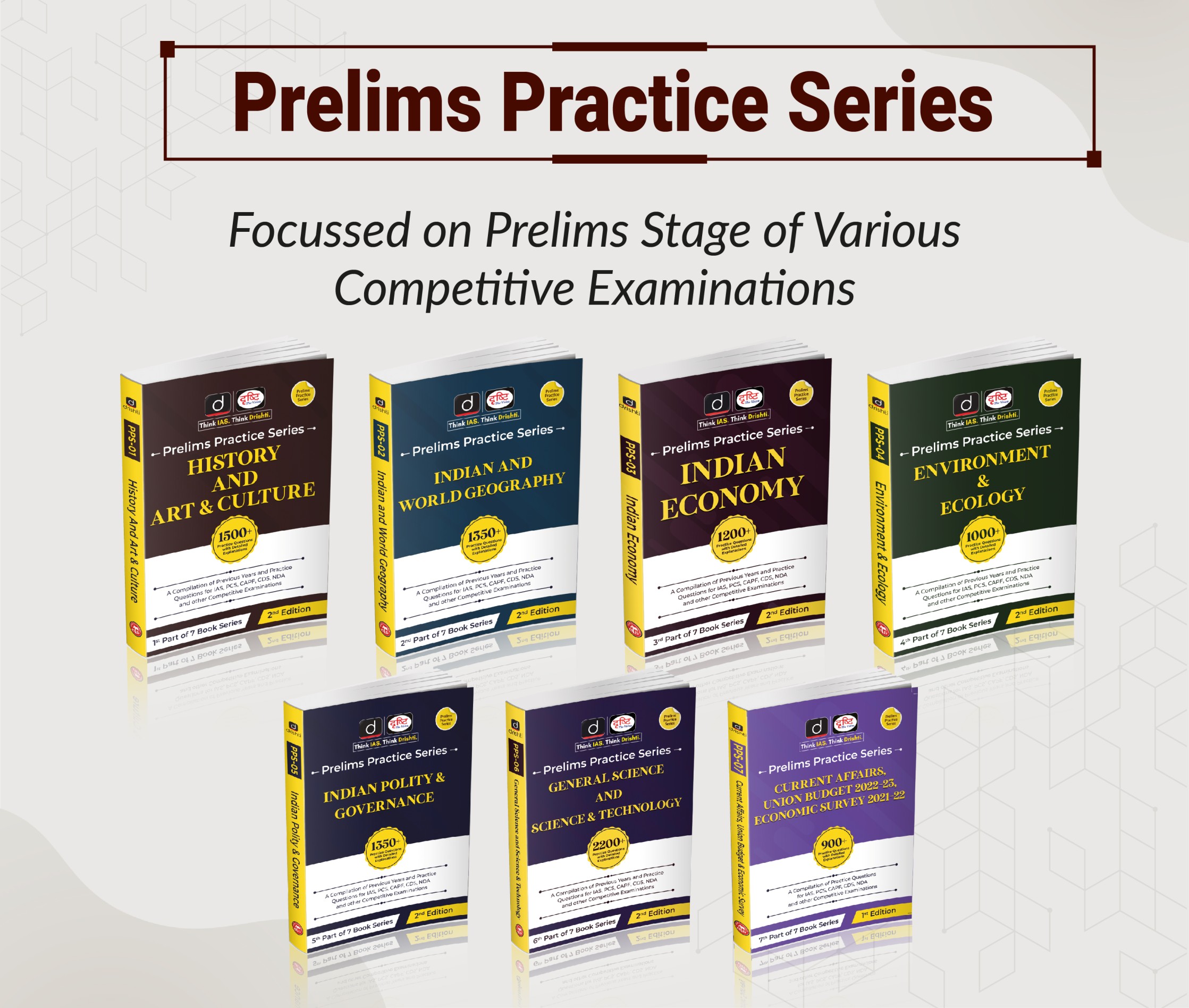
Important Facts For Prelims
Megalithic Burial Sites
Why in News?
According to recent findings, Andhra Pradesh has the largest anthropomorphic burial site collection in Tirupati district.
- Anthropomorphic sites are those marked by a representation of human form above the megalithic burials.
What are Megaliths?
- A megalith is a large stone that has been used to construct a prehistoric structure or monument, either alone or together with other stones.
- Megaliths were constructed either as burial sites or commemorative (non-sepulchral) memorials.
- The former are sites with actual burial remains, such as dolmenoid cists (box-shaped stone burial chambers), cairn circles (stone circles with defined peripheries) and capstones (distinctive mushroom-shaped burial chambers found mainly in Kerala).
- The urn or the sarcophagus containing the mortal remains was usually made of terracotta. Non-sepulchral megaliths include memorial sites such as menhirs.
- In India, archaeologists trace the majority of the megaliths to the Iron Age (1500 BC to 500 BC), though some sites precede the Iron Age, extending up to 2000 BC.
- Megaliths are spread across the Indian subcontinent. The majority of megalithic sites are found in Peninsular India, concentrated in the states of Maharashtra (mainly in Vidarbha), Karnataka, Tamil Nadu, Kerala, Andhra Pradesh, and Telangana.
What are the Different Types of Megalithic Structure?
- Stone Circles: Stone circles are commonly called "cromlechs" (a word in the Welsh language); the English word "cromlech" is sometimes used in that sense.
- Dolmen: A dolmen is a megalithic structure formed by placing a large capstone on two or more support stones, forming a chamber below, sometimes closed in on three sides. Often used as a tomb or burial chamber.
- Cist: Cist is a small stone-built coffin-like box or ossuary used to hold the bodies of the dead. Burials are megalithic forms very similar to dolmens in structure. These types of burials were completely underground. There were single- and multiple-chambered cists.
- Monolith: Any single standing stone erected in prehistoric times. Sometimes synonymous with “megalith” and “menhir”; for later periods, the word monolith is more likely to be used to describe single stones.
- Capstone style: Single megaliths placed horizontally, often over burial chambers, without the use of support stones.






